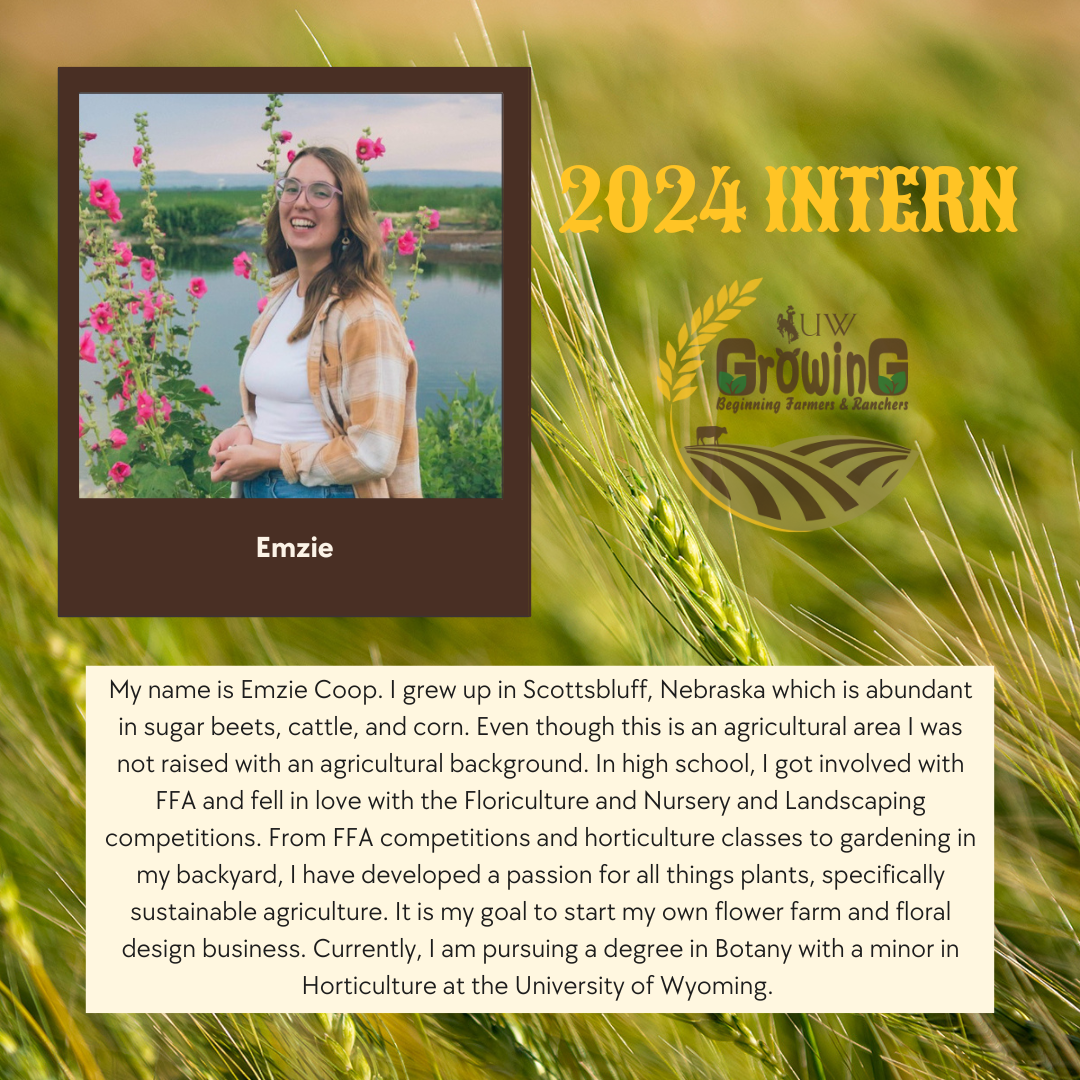Weeding and Weddings
#bfrdpwy #aginternship #RightRisk
Flower farming has become an increasingly popular profession in the past couple of years, especially on social media. Many flower farming accounts feature lovely pictures of full bouquets, healthy garden beds, and a perfect-looking lifestyle. What you don’t see is the blood, sweat, and tears that go into making that manicured picture a reality.
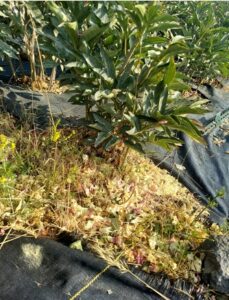
I started my internship at the beginning of bloom season. The first couple weeks were filled with carrying armfuls of peonies to the cooler and selling them at the market. I was living my dream, surrounded by beautiful flowers. Now that peony season is over, I am experiencing the slower, less glamorous side of the season: weeding and petal removal. When peony blooms are done, they drop their petals. Normally, this is fine and gives a good layer of natural mulch and organic matter; when it comes to peonies, leaving plant matter around the base of the plant is a surefire way to start disease. So, my pastime currently includes picking up dropped petals, leaves, and weeding. This is not fun work. It’s hot. The mosquitoes are out for blood (literally). I often return to my cabin sweaty, smelly, and covered in dirt. But that is the life of a gardener, which a flower farmer is. These slow, dirty seasons improve the health of the plants next year when they will have less disease and weed pressure.
Thankfully, there have been some more enjoyable activities sprinkled in through the week. My host has some other cut flowers she is learning to grow to include in future seasons. One of these is sweet peas, a unique cut flower because of their vining habit. My host gave me some twine and showed me how to tie it around the T-posts in the garden bed to create support for the unruly blooms. If they are not trellised, they stay on the ground where they lack space for their blooms, and will resort to vining on each other. Supporting vining plants keeps them organized. We also planted dahlias and zinnias earlier in the season which requires pinching. Pinching is snipping the center branch above a leaf set. This signals to the plant to send up more shoots. An un-pinched plant produces a single bloom with a stem that can get to the thickness of a broom handle, a characteristic that is difficult to handle. A pinched plant produces multiple, more manageable-sized flowers. This generates more bang for your buck, which is desirable for cut flower farms.
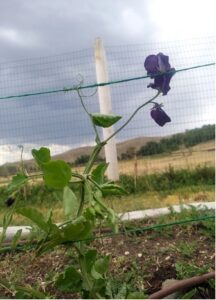
I also got to explore the wedding side of flower farming from a local flower farmer who is a friend of my host. She does floral arrangements for small, local weddings. She makes arrangements, mostly from plants growing in her backyard. She taught me to make a boutonniere and a bridal bouquet using the spiral technique. She showed me the website she uses to manage her clients, which also handles payments. All conversations between her and the bride are recorded on one platform. This is helpful because it maintains a work-life balance and keeps a record of the conversations between the bride and the florist to make sure she is creating the product the bride wants. She also showed me her bridal proposals on Canva. Proposals show the bride what the florist can do with their given budget, color palette, and season.
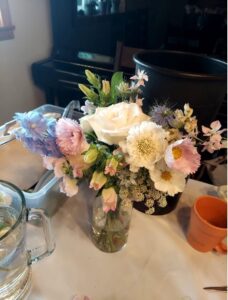
Out of all the flower farms I have visited this summer, this one most closely resembles the values I want to emulate in my future operation, which is keeping it small and working with the environment to produce a beautiful product. However, seeing the style of this operation opened my eyes to some of the challenges it includes. Because this operation is from her backyard, certain flowers are only available at certain times. It also means that something that is in season that a client wants could be unusable due to pests or weather. This could lead to clients coming with specific visions for their wedding flowers and getting something different. The farmer-florist is clear with her clients about how her operation can be unpredictable in its performance and she has not received negative reviews. This helped me realize that while I am still set to have a small, backyard-style operation, this style clashes with a culture that seeks instant, high-quality results.
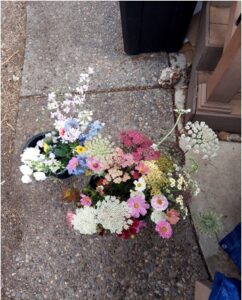
Despite all the weeding, this week is one of my favorites because I was able to play around with floral design. The things I learned from this farmer-florist improved my floral design skills and gave me insight into resources and practices to implement on my future farm. I also enjoyed learning different maintenance skills for flowers other than peonies. Overall, this week is teaching me patience. Although weeding is not the most aesthetic or enjoyable activity, it is integral to a healthy farm, and is probably good for me as well!
Submitted by: Emzie Coop
Edits by: GrowinG Internship Team

